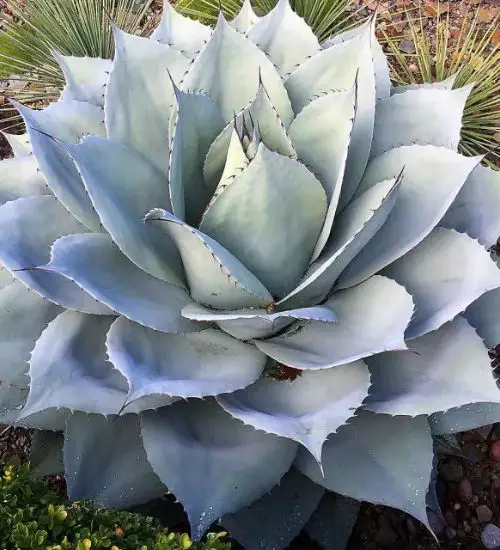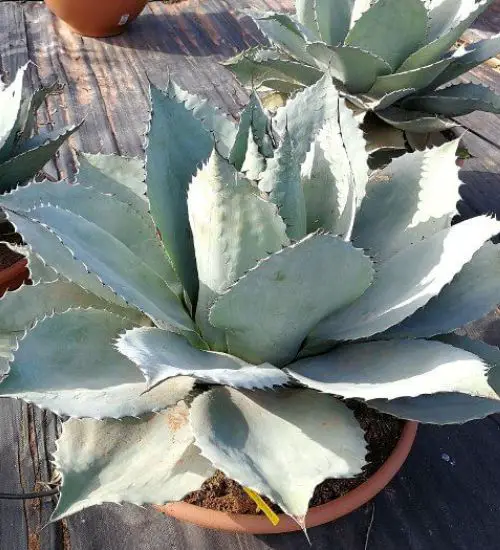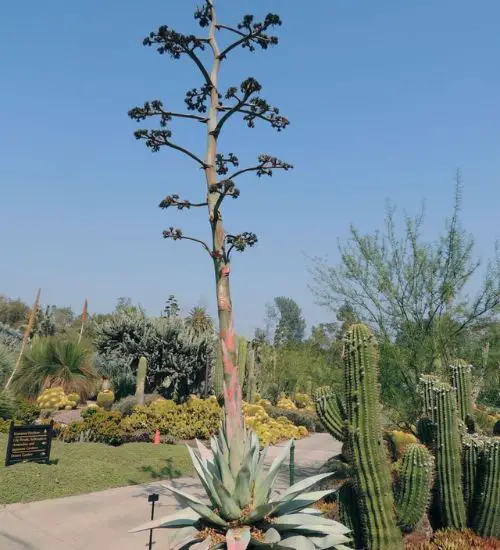Sun: Full sun to partial sun
Water: Typical water needs for a succulent
Temperature: Zone 7a from 0° F to 5° F (-17.8 ° C to -15° C) to Zone 11b from 45° F to 50° F (7.2° C to 10° C)
Winter Survival: Cold hardy
Propagation: seeds
Flower: in the summer
Flower Type: Yellow
Toxic: Toxic to humans and animals
Dormant: winter
Space Requirement: Outdoors
Common Problems: Plants may rot if overwatered, pests
Where to buy Agave ovatifolia?
Basc Care for Agave ovatifolia
Watering
Regular watering period should be every 2 weeks
One simple tip for you is that you can use some online apps to check the soil status before you go water your succulents. I would recommend the ThePlantsCheck app, it has some nice features there.
Fertilizing
Only feed this succulent during its active growing seasons which means no information. Use the right fertilizer applied in the right amounts. Applying half-strength balanced fertilizer every month or so is recommended for optimal results.
Do not fertilize during winter as the plant is dormant.
Sun & Location Requirements for "whale's tongue agave"
Agave ovatifolia loves the sun! To ensure your succulent is getting enough light, place it in a bright spot that receives direct sunlight for at least 6 hours each day. If you live in a cooler climate, consider bringing your succulent outside during the summer months.
As per this succulent profile, it is only able to stay healthy when the environment temperature is above the range of zone 7a from 0° F to 5° F (-17.8 ° C to -15° C).
Agave ovatifolia is a member of the Agave family and is known for being cold hardy. It is able to survive temperatures down to 0°F, making it an ideal choice for areas with cold winters. The succulent's thick leaves and stems help retain moisture in its cells, allowing it to survive through frigid temperatures. Additionally, the colorful foliage of "whale's tongue agave" adds a festive touch to any garden in cold areas.
Any succulents in the group will need a large space to grow. You should place your pot outdoor. Since this plant needs a lot of space than other succulents, you should consider not planting them together with other succulents/plants.
Agave ovatifolia also benefits from some indirect light throughout the day as well, so make sure you give it enough space to soak up light without becoming too exposed to heat.
Propagation
Propagating Agave ovatifolia from seeds is a great way to produce new plants without relying on cuttings or divisions. It's important to look for healthy, dark and plump seeds that are slightly sticky when touched. The soil should be pre-mixed with well-draining potting mix, before evenly sowing the seeds and pressing them into the surface. To ensure successful germination, gentle misting of the soil should be done and placed in indirect light.
Toxicity

All parts of Agave ovatifolia are considered to be poisonous, and should never be ingested. Even contact with the sap can cause serious skin irritations in humans and animals, so it’s important to wear gloves when handling them.
Pests and Diseases
Agave ovatifolia can be affected common pests and diseases like most of the other succulents such as Snout weevil.
If you do spot any of pest signs, you can treat your succulent using below methods.
- Snout weevil: apply the systemic insecticide two or three times a year.
Besides that, to prevent serious health issues from happening, keep your succulent in a well-ventilated area and check it regularly for any signs of pests or health problems.


